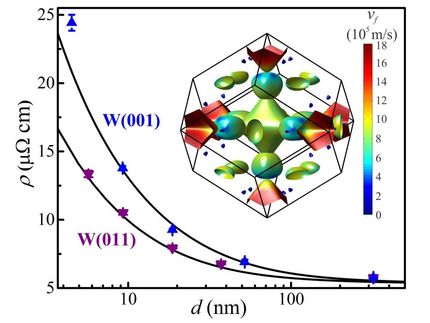High-performance thin film boost for electronics research
Researchers of the International Center for Materials Nanoarchitectonics (MANA) at the National Institute for Material Science have developed the world's highest performance thin-film capacitors using a new high-permittivity (high-k) dielectric sheet with molecular-level thickness (~1 nm). This technology may revolutionize the next-generation electronics.
The announcement of this breakthrough comes from a research group led by MANA Scientist Dr. Minoru Osada and Principal Investigator Dr. Takayoshi Sasaki of the International Center for Materials Nanoarchitectonics (MANA) at the National Institute for Material Science (NIMS) in Japan.
Good insulating, high-k nanofilms are expected to be key to future applications as predicted by the International Technology Roadmap for Semiconductors (ITRS).
Minoru Osada and colleagues created thin films based on titanium-niobate nanosheets (TiNbO5, Ti2NbO7, Ti5NbO14) as building blocks. The research group delaminated layered oxides and stacked sheets on an atomically flat SrRuO3 substrate, creating films between 5 and 15 nm thick. The thin-film capacitors developed by this method have excellent dielectric characteristics, achieving the world's highest performance permittivity (160 ~ 300) with a film thickness of 5 ~ 15 nm.
The researchers relate the dielectric performance of the nanofilms to the structural features. In these nanosheets, the octahedral distortion inherent to site engineering by Nb doping results in a giant molecular polarizability. New cooperative functions that originate from the mutual interactions between nanoscale structural units comprise the focus of nanoarchitectonics, the discipline at the center of MANA research.
This latest research demonstrates simultaneous improvements in a number of material properties, including relative permittivity, lower loss and leakage current. The authors add, "The solution-based room-temperature process using oxide nanosheets as building blocks opens multiple possibilities for the development of high-k dielectrics in capacitor technology, gate insulators in organic field effect transistors, energy-storage devices, and also future flexible electronics."
Original publication
Minoru Osada, Genki Takanashi, Bao-Wen Li, Kosho Akatsuka, Yasuo Ebina, Kanta Ono, Hiroshi Funakubo, Kazunori Takada, Takayoshi Sasaki; "Controlled Polarizability of One-Nanometer-Thick Oxide Nanosheets for Tailored, High-k Nanodielectrics"; Advanced Functional Materials, 21, 3482-3487, (2011).
Most read news
Original publication
Minoru Osada, Genki Takanashi, Bao-Wen Li, Kosho Akatsuka, Yasuo Ebina, Kanta Ono, Hiroshi Funakubo, Kazunori Takada, Takayoshi Sasaki; "Controlled Polarizability of One-Nanometer-Thick Oxide Nanosheets for Tailored, High-k Nanodielectrics"; Advanced Functional Materials, 21, 3482-3487, (2011).
Organizations
Other news from the department science

Get the chemical industry in your inbox
By submitting this form you agree that LUMITOS AG will send you the newsletter(s) selected above by email. Your data will not be passed on to third parties. Your data will be stored and processed in accordance with our data protection regulations. LUMITOS may contact you by email for the purpose of advertising or market and opinion surveys. You can revoke your consent at any time without giving reasons to LUMITOS AG, Ernst-Augustin-Str. 2, 12489 Berlin, Germany or by e-mail at revoke@lumitos.com with effect for the future. In addition, each email contains a link to unsubscribe from the corresponding newsletter.
























































